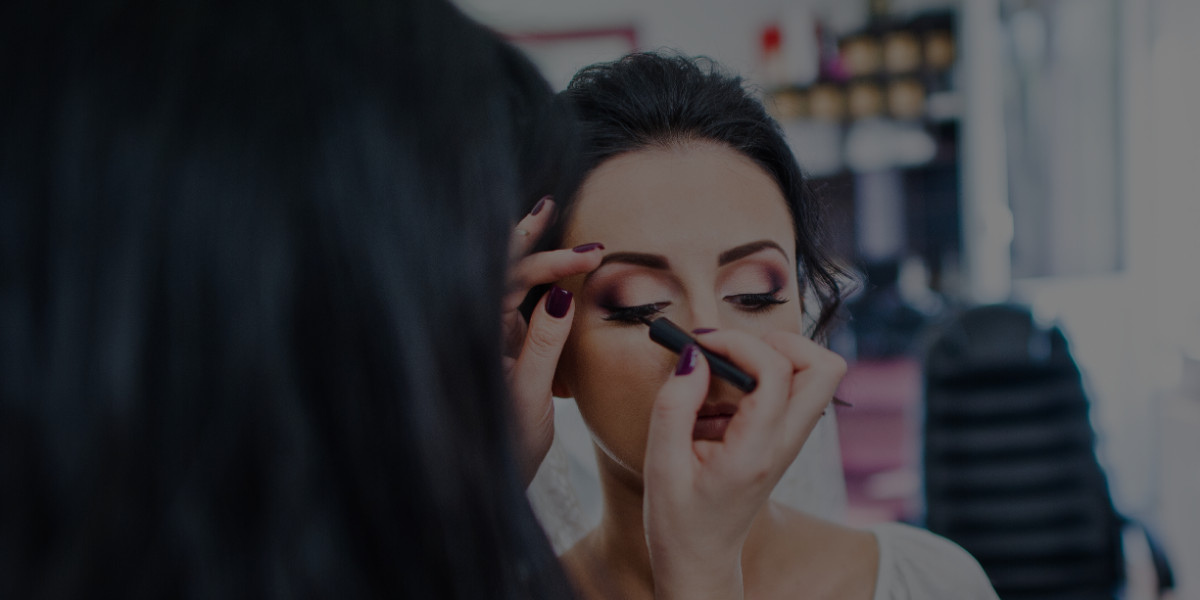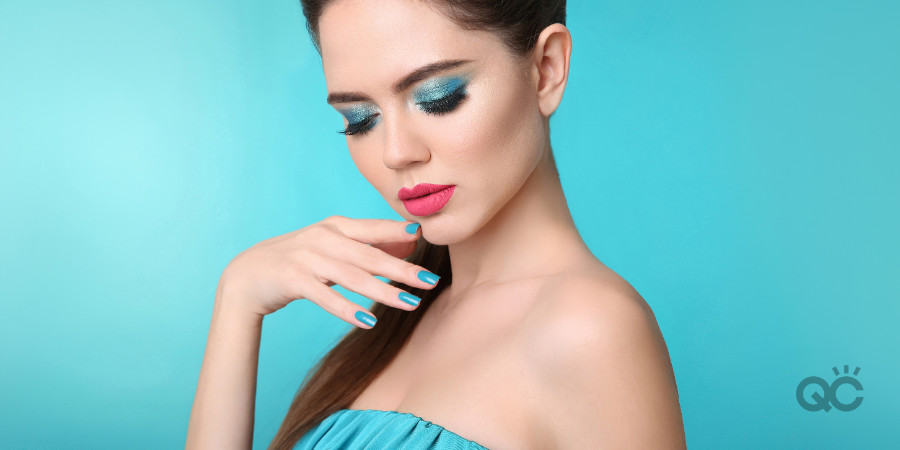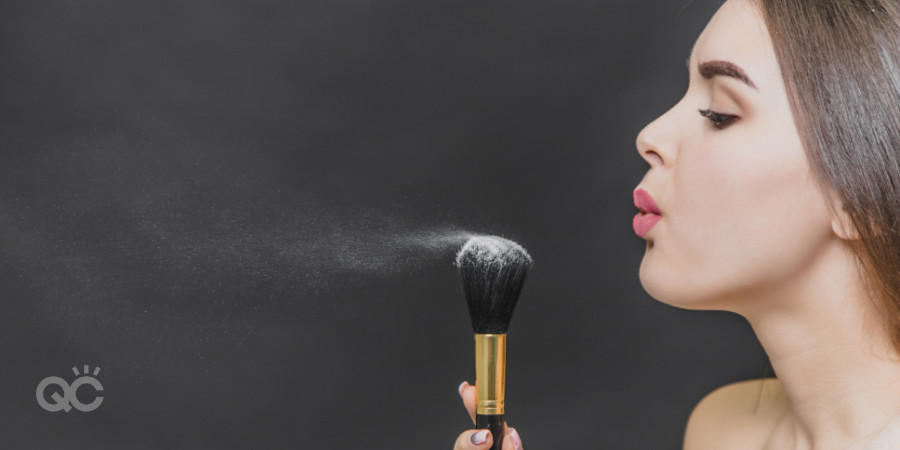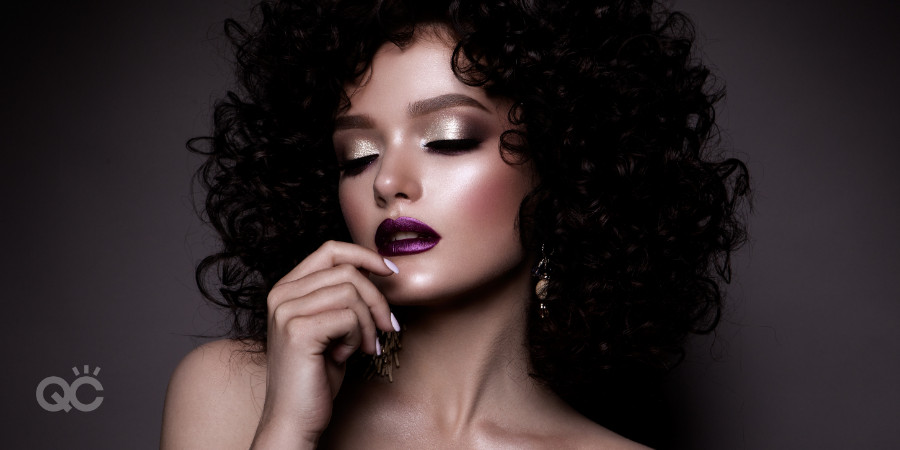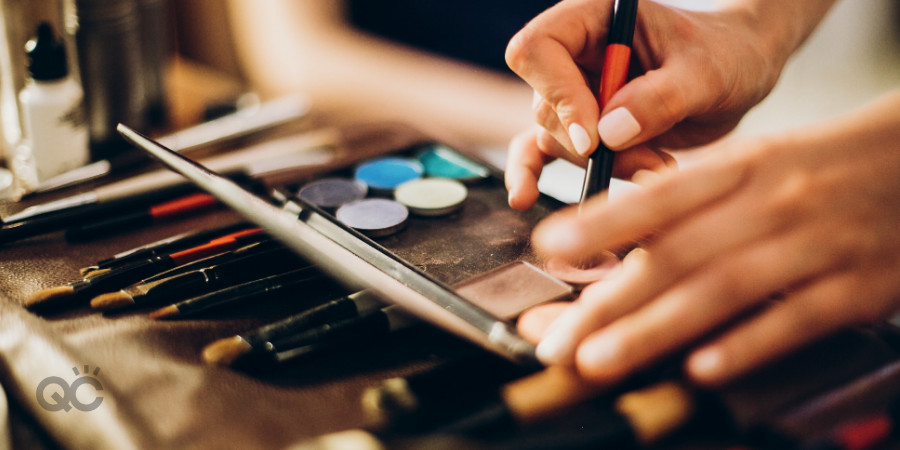By definition, a habit is a settled or regular tendency or practice, especially one that is hard to give up.
In makeup artistry, it is great to have habits—especially if these habits are being on time, using hand sanitizer, and keeping a tidy station. But there are also habits we should work to avoid. These are the sneaky ones because you may not even realize you do them!
Below is a list of some common bad makeup artist habits you should change right now!
1. Matching your makeup to the outfit.
Matchy-matchy makeup is a no-no! If someone is wearing blue and your immediate choice is blue eyeshadow, stop yourself. The idea that makeup must match clothes is an idea of the past, and it is often the sign of an inexperienced artist. Now, I’m not suggesting you should never pull colors from your client’s clothes for eye makeup. Instead, consider shades that suit the person’s eye color and skin tone. Yes, you may use colors from your makeup client’s clothes as a primary or accent color in the look, but make sure it’s by choice and not just a force of habit!
2. Blowing on your makeup brushes.
At some point, every makeup artist gets too much product on their brush. When this happens, there are many ways you can get rid of the excess product, but one of them is an absolute disaster! Do not blow the excess powder away!
As innocent as this blow may seem, it is totally unsanitary and revolting to the client who sees it happen. Instead of blowing on your makeup brush, you can tap the excess away on the edge of the table, swipe it on a tissue, or swipe it along the back of your (clean) arm. I can assure you no client wants your germs or spit on their face. Watch yourself! And if you catch yourself doing it, put the brush in the dirty pile and pick up a new one.
3. Treating makeup trends like they are classic techniques.
There are no rules to makeup and all knowledge is valuable. But it is smart to know who you’re learning from and what they are teaching you.
YouTube makeup tutorials is a favorite resource for many artists, but it is also a very dangerous playground. Many of the makeup gurus have no classical training and no actual understanding of technique. They may be good at applying makeup to their own faces, but they have little understanding of professional techniques in applying makeup to a variety of different people. Not everyone on YouTube is a hack, but there is just as much bad (if not more) than there is good.
One of the reoccurring bad habits I see is young makeup artists watching so many YouTube videos that they think the viral trends are standard practice. For example, as great as heavy contouring, inner waterline lining, baking, and excessively smoked-out lower lash lines may be, they are trends and should be treated as such.
Some makeup artists learn these trendy techniques and think they should be part of every makeup job they do. When waterline lining starts appearing in your bridal makeup application despite it not being requested by the bride, you know you have a problem. This can be a hard habit to break, because these techniques may sneak into your application routine. The best way to break them is to get professional makeup training and then reassess your work.
4. Not cleaning and sanitizing your professional makeup kit.
This is the biggest bad habit a makeup artist can have. Not keeping liquid and cream products or application tools clean is terrible for both your client and the product. When you double-dip into your makeup products, you are putting bacteria from the client into the product. These germs can grow and spread to everyone else you work on. This can result in nasty break outs, skin infections, or worse!
Break this habit by training yourself to use a clean palette knife to take the amount of product you need from their original containers. And always sanitize your brushes between every client. Clean your brushes with a spot-cleaner or isopropyl alcohol between clients, but it is ideal to deep-clean your brush set at the end of the day. These habits will keep your brushes free of bacteria, save your clients’ skin, and improve the longevity of your expensive tools.
You may be in a hurry if you are working on multiple people, but you must keep your makeup kit clean—your reputation as a professional makeup artist depends on it!
5. Not honoring makeup expiration dates.
Yes, every pro makeup artist wants to save money. But keeping expired products in your professional makeup kit is not one of them. Expired product can harbor bacteria and no amount of saved money is worth the health of your clients’ skin or your reputation. Consider this article from Elle if you need to be reminded of the general guidelines. The best way to break this habit is by labeling your product. Using a Sharpie, write the expiry date onto your product in a discreet location. When that date comes, toss it!
The worst thing about habits is that they are hard for us to recognize in ourselves. The best advice I can offer is to just practice awareness. If you have read this and are guilty of one or more of these habits, you will most likely spot yourself doing it (or not doing it) in the upcoming weeks. Once you see it, you can correct it. Mindfulness is the key ingredient to making change! So, here’s to breaking habits and having an even better makeup career!
What bad habits did you just realize you were doing? Let us know!
